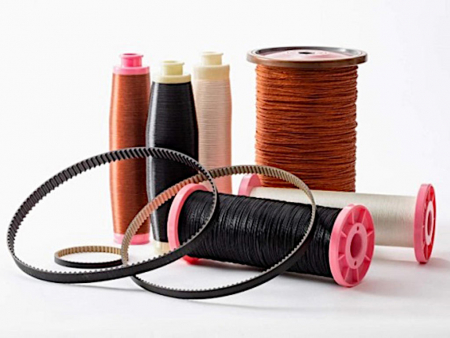Hazardous Substance-Free Adhesive for Glass Cord Reinforced Rubber

NSG Group has developed an adhesive for rubber reinforcement materials for its glass cord products that does not contain resorcinol and formaldehyde (RF), chemical substances of concern for environmental and human health. While restrictions on the use of hazardous substances are expanding within the supply chain that handles these products, the adhesive the company have just developed is based on proprietary technology and was developed based on the concept of a highly versatile, safe, and secure adhesive that can be used with rubber products for a variety of applications.
Rubber products such as timing belts, tyres and hoses use various fibres as reinforcement materials to maintain strength and form stability. Resorcinol formaldehyde latex (RFL) adhesives have been widely used in the process of bonding various fibres and rubber compositions because of their high adhesive performance. However, as restrictions on the use of materials and components that use substances harmful to the environment and human health are spreading worldwide, there has been a need to develop new adhesives that do not contain RFL.
The adhesive developed by the NSG Group this time applies proprietary adhesion technology already successfully developed for belts in oil and uses a newly developed coupling agent as a substitute for RFL, which is harmful to the human body, thereby eliminating the risk of leakage of hazardous chemicals and contributing to a reduction in environmental impact. It achieves adhesive performance equivalent to that of conventional RFL adhesives. It is characterized by the fact that it can be widely used as an adhesive for not only glass fibre but also polyester, carbon, aramid and other fibre cords.



